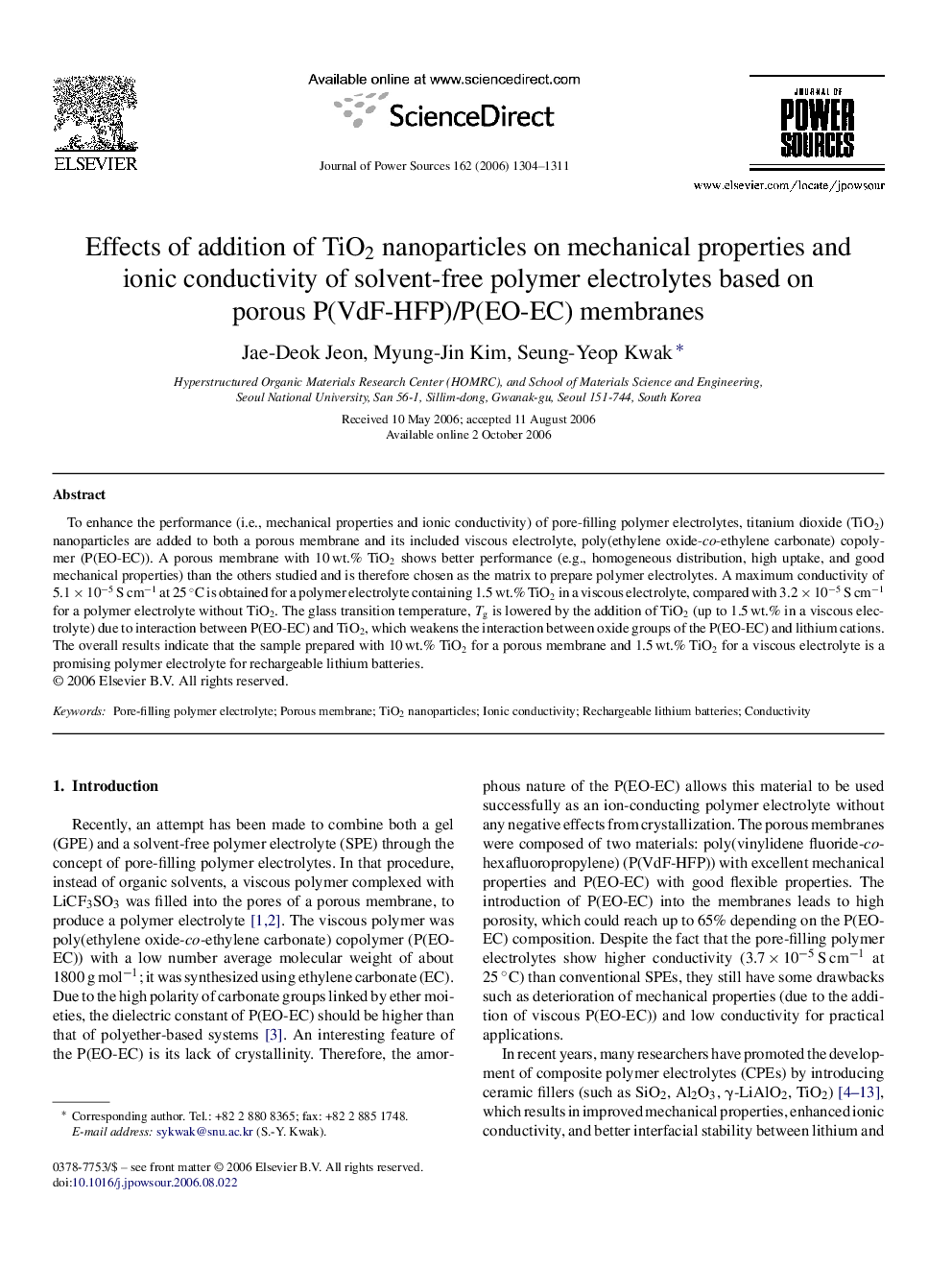| Article ID | Journal | Published Year | Pages | File Type |
|---|---|---|---|---|
| 1292508 | Journal of Power Sources | 2006 | 8 Pages |
To enhance the performance (i.e., mechanical properties and ionic conductivity) of pore-filling polymer electrolytes, titanium dioxide (TiO2) nanoparticles are added to both a porous membrane and its included viscous electrolyte, poly(ethylene oxide-co-ethylene carbonate) copolymer (P(EO-EC)). A porous membrane with 10 wt.% TiO2 shows better performance (e.g., homogeneous distribution, high uptake, and good mechanical properties) than the others studied and is therefore chosen as the matrix to prepare polymer electrolytes. A maximum conductivity of 5.1 × 10−5 S cm−1 at 25 °C is obtained for a polymer electrolyte containing 1.5 wt.% TiO2 in a viscous electrolyte, compared with 3.2 × 10−5 S cm−1 for a polymer electrolyte without TiO2. The glass transition temperature, Tg is lowered by the addition of TiO2 (up to 1.5 wt.% in a viscous electrolyte) due to interaction between P(EO-EC) and TiO2, which weakens the interaction between oxide groups of the P(EO-EC) and lithium cations. The overall results indicate that the sample prepared with 10 wt.% TiO2 for a porous membrane and 1.5 wt.% TiO2 for a viscous electrolyte is a promising polymer electrolyte for rechargeable lithium batteries.
